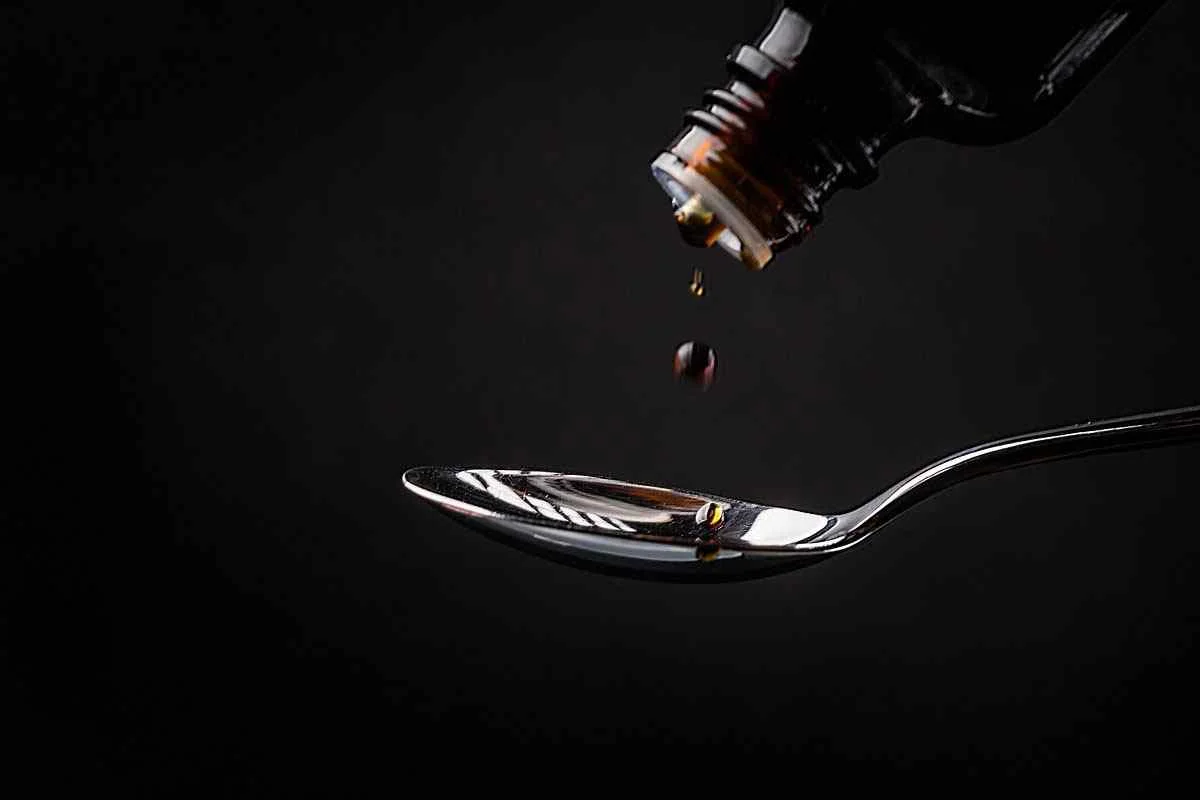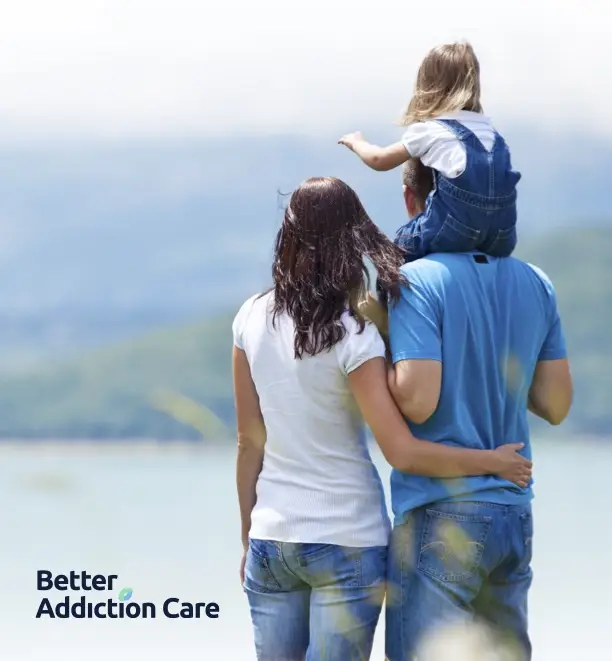Codeine
Codeine is an opioid analgesic that is FDA-approved for the treatment of mild to moderate chronic pain, such as in cancer.

Common Brand Names: Tylenol with Codeine (with acetaminophen), Soma Compound with Codeine (with aspirin and carisoprodol), Empirin with Codeine (with aspirin), Nurofen Plus (with ibuprofen)
Codeine is an opioid analgesic that is typically used for the treatment of mild to moderate pain. It works by binding to opioid receptors within the central nervous system (CNS), which leads to a decrease in the secretion of neurotransmitters responsible for the perception of pain, such as gamma-aminobutyric acid (GABA), substance P, acetylcholine, dopamine, and noradrenaline.
As a Schedule II medication, codeine is associated with a high risk for both physical and psychological dependence. Chronic use of the drug can also lead to addiction.
What Is the Medical Use of Codeine?
Aside from relieving mild to moderate pain, such as that caused by dental surgeries,codeine is also used to reduce coughing. However, it is not recommended for children under 12.
Off-label, codeine is also sometimes used to treat persistent diarrhea, showing equal effectiveness as loperamide. One study has also shown that codeine is a viable treatment for restless leg syndrome, especially when given at night.
Codeine, however, is contraindicated in patients who:
- Have exhibited hypersensitivity or allergic reaction to codeine and its components
- Have underlying respiratory disorders
- Have asthma
- Have a known or suspected paralytic ileus or intestinal obstruction
- Are children and with a history of tonsillectomy or adenoidectomy
It is also not recommended to use codeine with monoamine oxidase inhibitors (MAOIs).
How Is Codeine Abused?
As a common cough medicine, codeine can easily be purchased without a prescription. It is available in syrup, tablet, and capsule form, which also makes it prone to experimentation. In fact, codeine is often combined with other substances like alcohol marijuana.
While most who abuse codeine simply take it as is, there are also those who mix the drug with soda to make it more palatable. The drink is commonly called “sizzurp” or “purple drank.” Other ways that codeine may be abused include chewing, crushing, snorting, or injecting the drug.
Drugs That Interact with Codeine
To increase efficacy, codeine is sometimes prescribed with acetaminophen. While this combination is safe, there are many more drugs that should not be taken with codeine. These include the following:
- Isocarboxazid
- Linezolid
- Methylene blue
- Phenelzine
- Selegiline
- Tranylcypromine
It is not advisable to take codeine if you are taking one or more of the above-mentioned medications, especially if you have taken them within the past 2 weeks.
Other substances that should not be mixed with codeine due to potential side effects include:
- Bupropion
- Cyclobenzaprine
- Mirtazapine
- Tramadol
- Trazodone
- 5HT3 serotonin blockers
- Selective serotonin-reuptake inhibitors, including citalopram, escitalopram, fluoxetine, paroxetine, and sertraline
- Serotonin and norepinephrine reuptake inhibitors, including duloxetine, desvenlafaxine, milnacipran, and venlafaxine
- Tricyclic antidepressants or “mood elevators,” including amitriptyline, clomipramine, desipramine, doxepin, imipramine, nortriptyline, protriptyline, and trimipramine
Diuretics, lithium, medications for cough, cold, or allergies, medications for anxiety or seizures, as well as medications for migraine headaches should also not be taken with codeine.
Why Does Codeine Present a Risk for Addiction?
Codeine is an opioid, which means its pain-relieving action can induce feelings of relaxation and being “high.” What’s more, because opioids work by blocking pain signals and releasing large amounts of dopamine, users may associate taking codeine with pleasure. Therefore, they feel the urge to repeat the experience and take more codeine.
Coupled with its widespread availability and rather low cost, it’s easy to see why codeine can be addicting.
Codeine Side Effects
Codeine is associated with side effects similar to that of other opioid analgesics. Some of the common adverse reactions following codeine therapy include:
- Constipation
- Nausea and vomiting
- Abdominal cramps
- Sedation
- Clouded mentation
- Hypogonadism
- Decreased libido or sexual dysfunction
- Fatigue
- Weakness
- Urinary retention
- Hypersensitivity
- Pruritus or itching
- Tremor
- Bronchospasm
Patients diagnosed with sleep apnea or other respiratory disorders may also be at an increased risk for respiratory depression associated with codeine use. Dose adjustments must be made and patients must be put under active surveillance to prevent this complication.
Among pregnant patients, maternal use of codeine may be associated with negative neonatal outcomes, such as premature birth, low birth weight, and even neonatal death. Neonatal abstinence syndrome may also occur. This manifests as irritability, sleeping disturbances, tremor, high-pitched cry, seizure, and hyperreflexia.
Long-Term Effects of Codeine
Among the most common long-term adverse effects of codeine are depression and depressive symptoms. Other studies have also shown that those who have become dependent on the drug sometimes developed anxiety and gastrointestinal disturbances like pancreatitis.
Symptoms of Codeine Overdose
Some of the most common symptoms of codeine overdose are listed below.
- Bluish lips and fingernails
- Breathing problems (e.g., labored breathing, shallow breathing)
- Cold, clammy skin
- Confusion
- Constipation
- Dizziness or lightheadedness
- Drowsiness, fatigue, or weakness
- Flushing of the skin
- Gastrointestinal spasms
- Itching
- Loss of consciousness
- Low blood pressure
- Muscle twitches
- Nausea and vomiting
- Tiny pupils
- Weak pulse
- Coma
Naloxone is a potentially life-saving treatment for those who have overdosed on opioids like codeine. Talk to your doctor about getting this emergency drug if you or a member of your family is medicating on codeine or is at risk of abusing it. Naloxone can be used to reverse the fatal effects of an opioid overdose.
Signs of Codeine Addiction
Schedule II medications such as codeine are considered potent controlled substances. They carry a high risk for drug misuse and are commonly sought by people with addiction.
The pathological behavioral patterns associated with drug addiction are listed in the Fifth Edition of the Diagnostic and Statistical Manual (DSM-5) as the 11 criteria for substance use disorders (SUDs). For codeine addiction, the following symptoms may be observed:
- Taking higher doses of codeine or taking it for a longer time than prescribed
- Being unable to stop or reduce the use of codeine despite wanting to
- Taking a lot of time trying to get or use codeine, or recovering from use of it
- Having cravings for codeine
- Using codeine results in the failure of managing personal obligations
- Using codeine gives rise to problems in interpersonal relationships
- Giving up on important recreational or social activities because of codeine use
- Continuing to use codeine even when it puts you in danger
- Continuing to use codeine despite exacerbation of physical or psychological conditions
- Tolerance, or requiring higher and higher doses of codeine to achieve or maintain its desired effects
- Developing withdrawal symptoms after abruptly stopping the use of codeine
Signs of Codeine Withdrawal
Withdrawal symptoms due to chronic codeine use may manifest differently in each person—and depending on the time lapsed after last use. In general, these symptoms may include:
- Runny eyes and nose
- Yawning
- Sneezing
- Widened pupils (black circles in the middle of the eyes)
- Piloerection (hair on arm stands on end)
- Insomnia
- Sweating
- Fast breathing
- Rapid heartbeat
- Chills
- Irritability
- Restlessness
- Anxiety
- Agitation
- Muscle Aches
- Loss of appetite
- Vomiting
- Nausea
- Diarrhea
Note that while you may use codeine as prescribed, you can still develop a dependence on it, which means that if you abruptly stop taking the drug, you may experience the above-mentioned withdrawal symptoms.
Dependence on codeine does not necessarily mean you’re addicted to the drug. It just means that your body has gotten used to the presence of the drug in your system and that it can be dangerous to suddenly just stop using it. You need to talk to your physician, who can help you by setting a tapering schedule that you can follow. This will ensure that you can discontinue the drug in a gradual and safe manner.
Codeine Detox
If you or someone you know is experiencing codeine withdrawal symptoms, the best course of action is to receive detoxification intervention at a medical detox facility. Detoxification is a program that aims to manage the adverse effects of suddenly stopping the use of a drug after becoming dependent on it.
Codeine detox usually starts with tapering the doses that you take. As a patient, you may also start on a carefully monitored regimen involving medications like methadone, buprenorphine, or naltrexone. Additionally, you may require receiving other medications, nutritional supplements, and IB fluids that will further restore your health. Medical professionals in the detox facility will provide round-the-clock care and support during your recovery process to ensure your safety and comfort as you go through the stages of withdrawal.
Rehabilitation and Treatment for Codeine Addiction
If you are struggling with codeine addiction, professional treatment is key to helping you get your life back on track. With professional management of codeine use disorder, you can quit using tramadol and start your journey toward a drug-free life. Depending on the situation, treatment will either be on an inpatient or outpatient basis.
- Inpatient codeine addiction treatment: This is the more intensive of the two options for rehabilitation, ideal for those with severe symptoms or a history of non-compliance to treatment protocols. In inpatient rehab, you will stay in the facility throughout the program. Apart from receiving a combination of treatment methods, which may include individual therapy, group counseling, and drug education classes, you will also receive constant supervision and support from medical professionals.
- Outpatient codeine addiction treatment: In outpatient rehab, you will continue living in your own home, but you will be required to attend therapy and counseling at an assigned treatment center. This affords you more freedom since you can continue your usual activities like going to work or attending school. Outpatient rehab is best for those with milder addictions, as well as those who have a strong support system at home.
Get the Help You Need Today
If you’re planning to receive addiction treatment services but you’re concerned about the costs, you’ll be glad to know that most insurance plans offer some form of coverage for addiction treatment, including inpatient and outpatient care. For those who don’t have insurance, there are plenty of other options for financing. In short, you don’t have to worry about paying for everything out of pocket. The most important thing is that you recognize that you need help and that there is a way to get it.
Call Better Addiction Care today at (800) 429-7690 to speak to a recovery support advisor. They will help verify your insurance status and find a suitable program at our partner treatment centers across the country.
A Brief History of Codeine
Codeine was first synthesized in 1830 by a French chemist named Pierre-Jean Robiquet. He observed that the extraction of morphine could isolate a residue that, when ground with potassium hydroxide and washed with water, could be transformed into powder. The crystallization of this substance would form crystallized powder, which Robiquet named codeine. Codeine soon became one of the most potent semi-synthetic opiates and the most widely used opiate globally. Today, codeine is listed in the World Health Organization’s List of Essential Medicines.
Resources
Treatment Centers in Ohio






